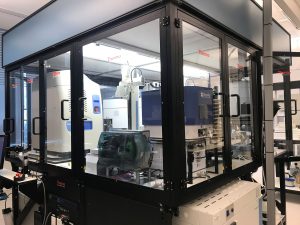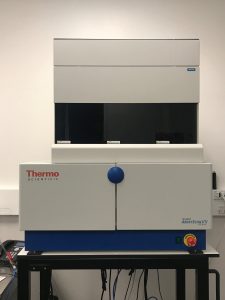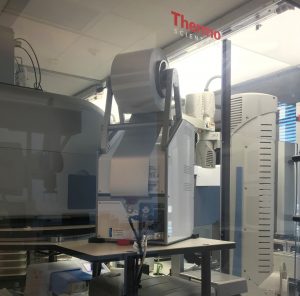- small molecule high-throughput screening services on a cost recovery basis, to both SickKids and external investigators.
- small molecule libraries ranging in size from 320 to 69,000 compounds, for a total of 147,025 compounds (see a list of our collections).
- “drug-like” small molecule collections and approved drug/bioactive compound/natural product collections.
- access to in vivo cell-based screening approaches to identify the role of specific genes in cell signaling using SPARC’s extensive cDNA and shRNA libraries.
- guidance for HTS assay development and validation, for both biochemical and cell-based assays.
- access to “tipless” liquid dispensing instruments to reduce HTS costs and waste.
- support for analysis of HTS results and formation of a “hit” list.
- access to CDD Vault software for analysis and visualization of HTS results.
- support for hit follow-up and confirmation.
Client Testimonials:
“Our specific project has required the development of novel HTS protocols. You…have enthusiastically supported the development of these methods, and offered invaluable insight and assistance, and have greatly facilitated our research in developing an HTS screen.” (Belinda Chang and Benjamin Scott, UT, June 2016)
“(You) have been instrumental in guiding me to choose and develop the optimal assay to use in our high-throughput screen and to select the most suitable small compound library for my purposes… I am very pleased with the excellent support and infrastructure SPARC BioCentre has to offer to perform high-throughput screens and subsequent confirmation experiments.” (Karin Hermans, SickKids, Aug 2016)
“I did a kinase inhibitor screen on…cells using the Cellomics VTI with the SPARC facility to understand the pathways regulating…these cells…We were able to optimize the cell nuclear mask despite having very tightly clustered colonies and were able to automate the staining process, which allowed more consistency. From the screen, I was able to validate two known pathways and identify three novel ones.” (CL, SickKids, June 2016)
For questions or inquiries regarding HTS of small molecule libraries, please contact Christopher Fladd; cfladd@sickkids.ca.





